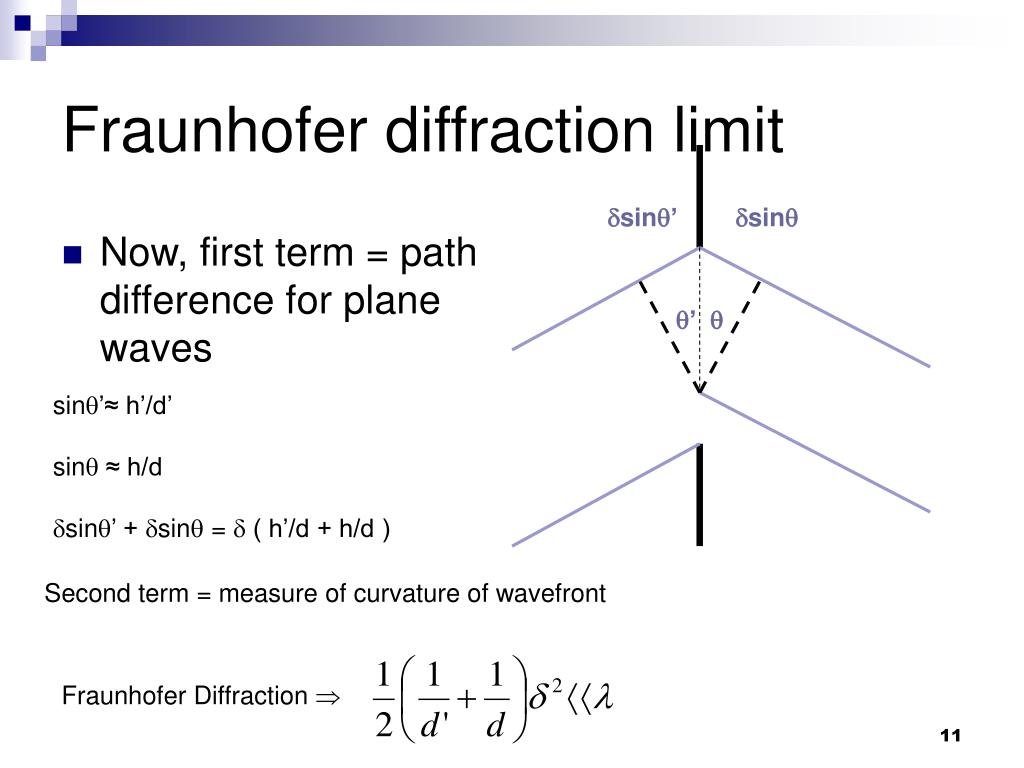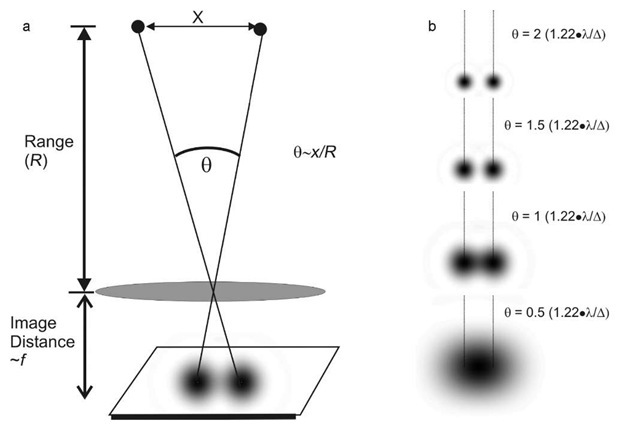
We WANT our sensors to out-resolve the lenses. the point between limits set by aberrations and limits set by diffraction) is unchanged.Īnother pointless worry is "do the latest sensors out-resolve my lenses?" To put that more usefully, the optimum aperture of the lens (i.e. The behaviour of the lens itself does not change, nor is there any change in the aperture at which diffraction becomes the limiting factor the image quality. The image is then enlarged more for viewing so any loss of detail or sharpness caused by diffraction is more visible. What happens when you use a smaller sensor is that a smaller part of the image created by the lens is captured. There is a lot of garbage "information" on the web that is misleading to photographers that don't have a background in maths/physics/optics/sampling-theory.įor correct and accurate information on matters like these I recommend the web site "Cambridge in Colour": The sensor cannot alter properties of the lens!
DIFFRACTION LIMIT CALCULATOR ISO
Many times, it will be a compromise between several factors such as more depth of field (narrow aperture) and usable shutter speed and ISO (wide aperture).ĭiffraction is a feature of the lens. Ultimately you must consider all of the factors involved to decide what is the best aperture to use for a particular photograph. Most other manufacturers' DSLR offerings fall somewhere along the same lines. Current Canon DLSRs may have a DLA as low as f/6.6 (70D, 7DII) and as high as f/11 (EOS 1D X). For more about diffraction, read this question. The progression from sharp to soft is not an abrupt one. Higher resolution sensors generally continue to deliver more detail well beyond the DLA than lower resolution sensors until the "Diffraction Cutoff Frequency" is reached (a much narrower aperture). It is where image sharpness begins to be compromised for increased DOF. DLA does not mean that narrower apertures should not be used. As sensor pixel density increases, each pixel gets smaller and the DLA gets wider. The lower DLA of the 70D is due to its smaller sensor/pixel size that requires higher magnification to display images from the 70D at the same size as an image from the larger sensored 6D.ĭiffraction at the DLA is barely visible when viewed at 100% (1 pixel = 1 pixel) on a display. The 70D has a pixel pitch of 4.1µm and DLA of f/6.6.The 6D has a pixel pitch of 6.54µm and DLA of f/10.5.Both have the same resolution: 5472x3648.
DIFFRACTION LIMIT CALCULATOR FULL
Take for example the 20.2MP full frame Canon 6D and compare it to the 20.2MP APS-C 70D. For an 18MP image viewed on a 23" HD (1920x1080) monitor that is the equivalent magnification of a 54"x36" print! The effects of diffraction at the DLA are only observable if the resulting image is magnified enough that the viewer can discretely resolve individual pixels. This is because DLA assumes a Circle of Confusion (CoC) equal to the pixel pitch of a particular sensor. The aperture at which the sensor can resolve the Airy disc is what we refer to as that sensor's Diffraction Limited Aperture (DLA).ĭiffraction Limited Aperture (DLA) is only applicable at 100% viewing size.

The resolution limit of the sensor is determined by the pixel pitch: that is, the distance of the center of each pixel well from adjacent pixel wells. Only when the size of the Airy disc is large enough to be resolved by the sensor will the image be diffraction limited. If the size of the Airy disc caused by diffraction is smaller than the ability of the sensor (or film grain) to resolve it, then the image will not be diffraction limited.

What it does affect is the sensor's (not the lens') diffraction limit. Therefore, if the sensor is larger, and the photo-sites for the same resolution can also be larger, does this influence the diffraction limit of a lens? Does sensor size impact the diffraction limit of a lens?


 0 kommentar(er)
0 kommentar(er)
